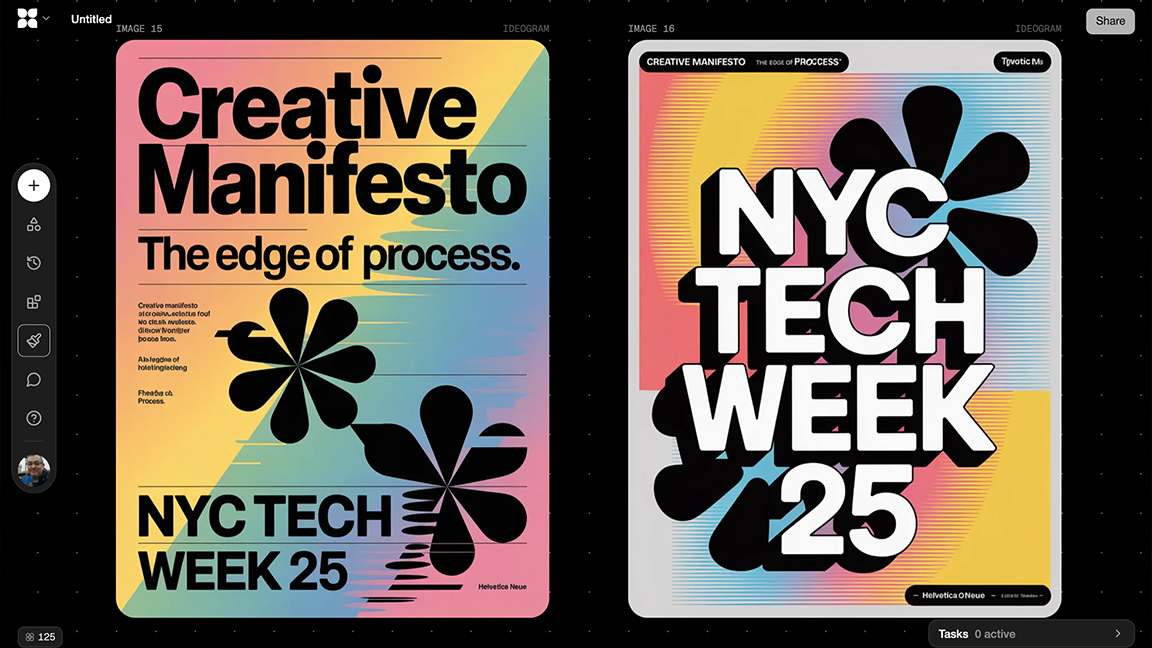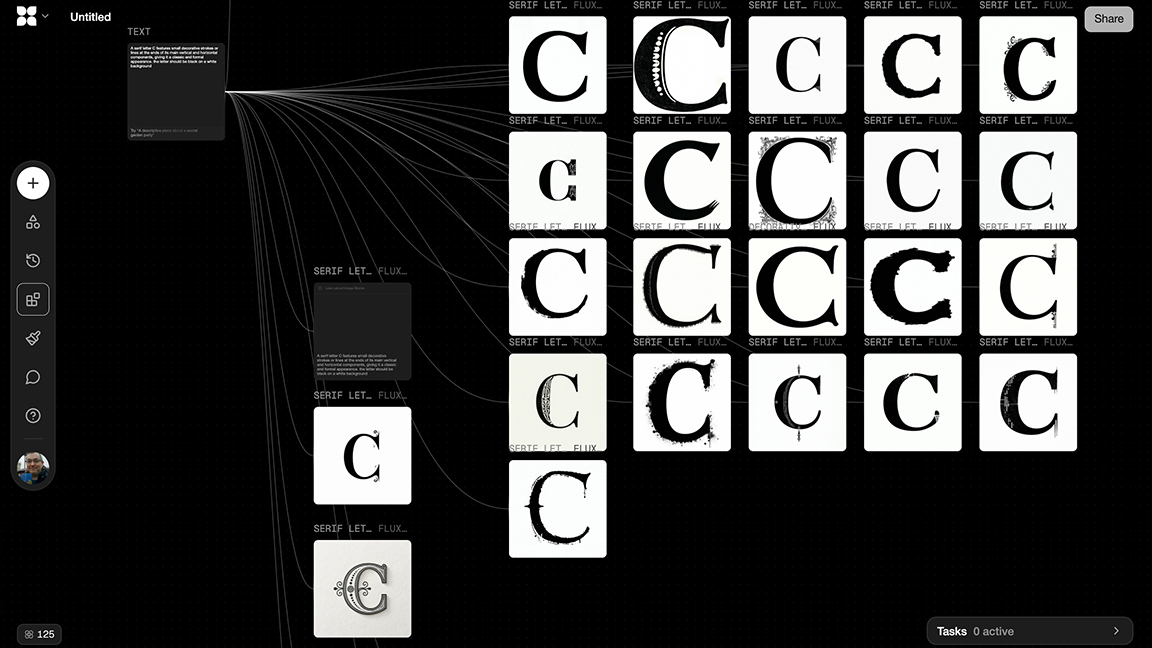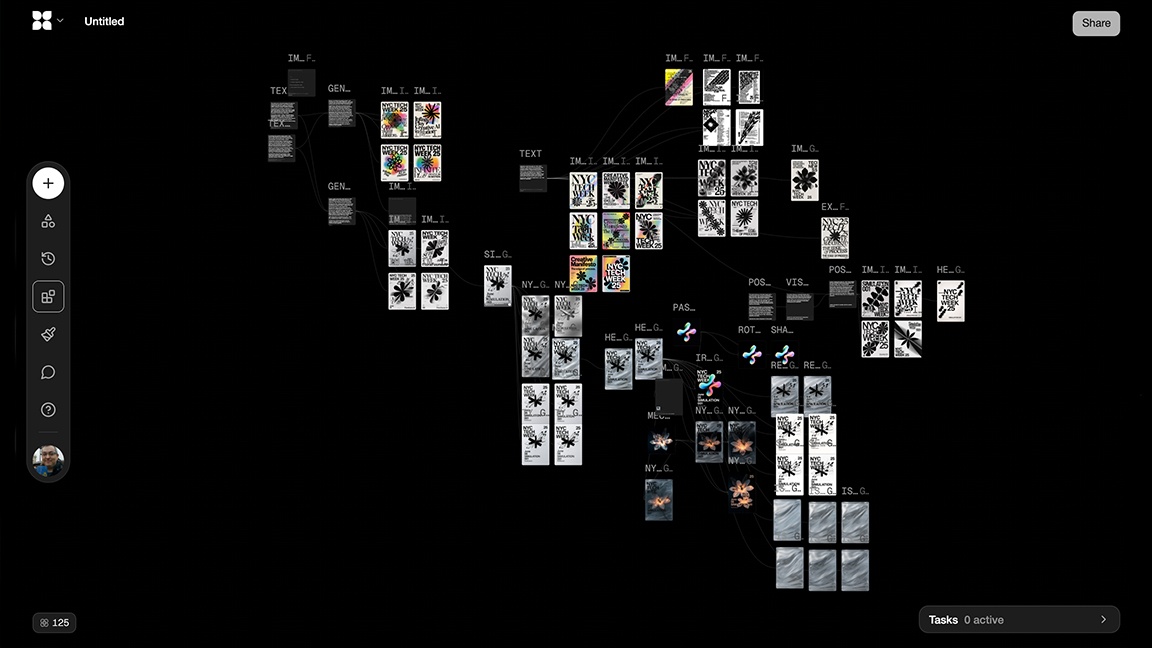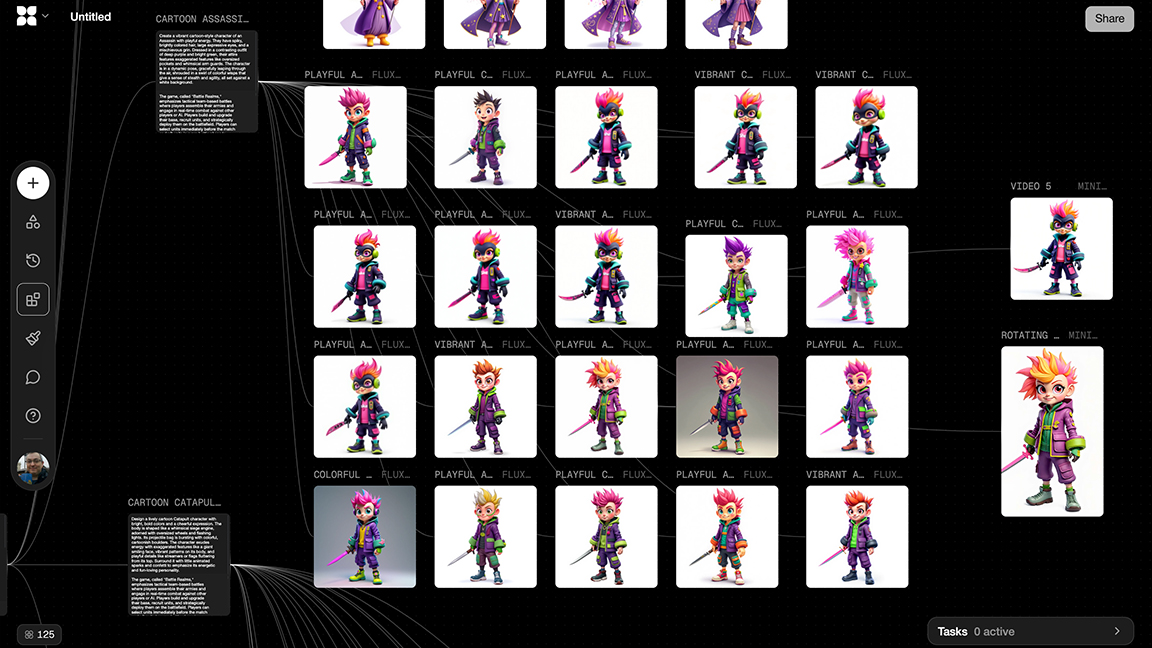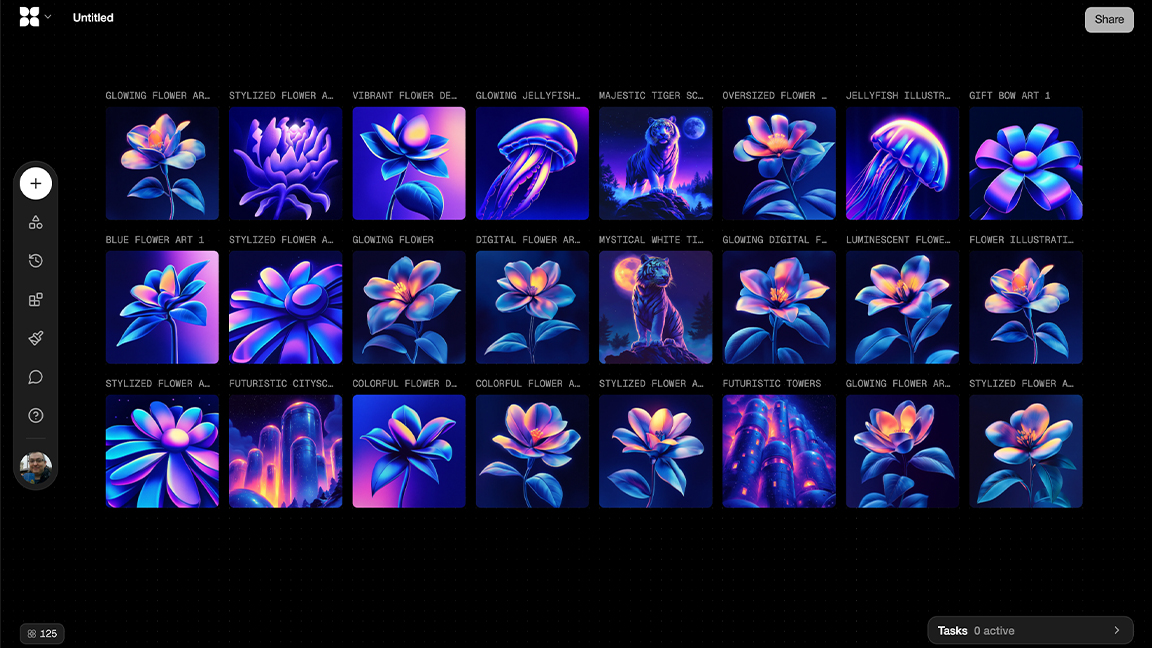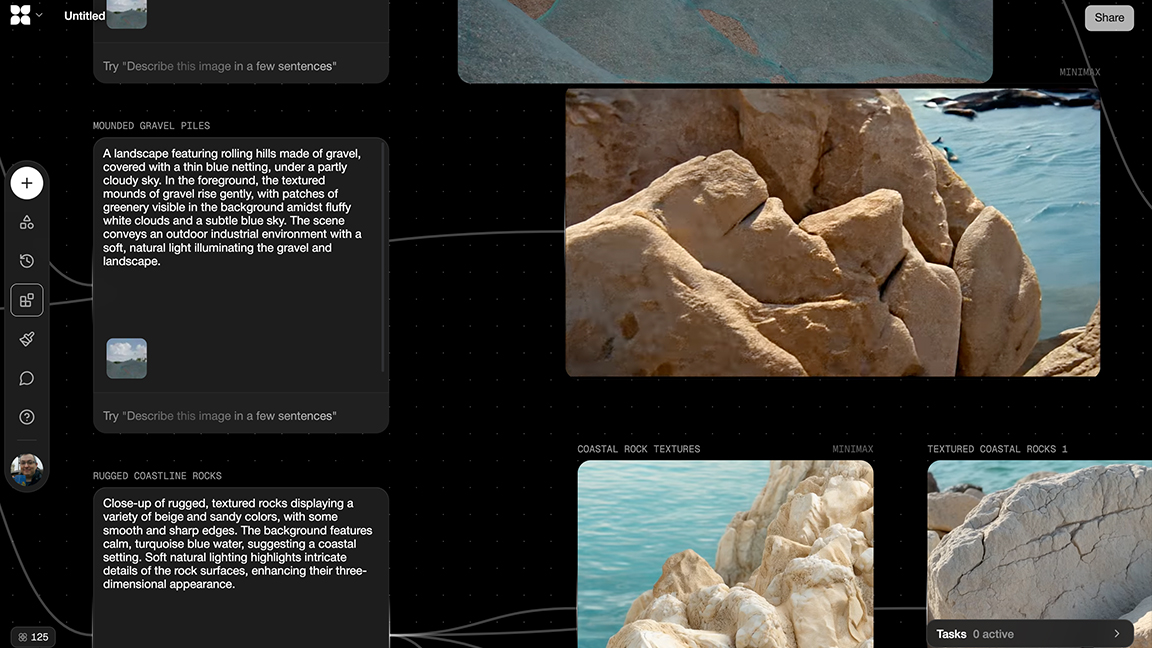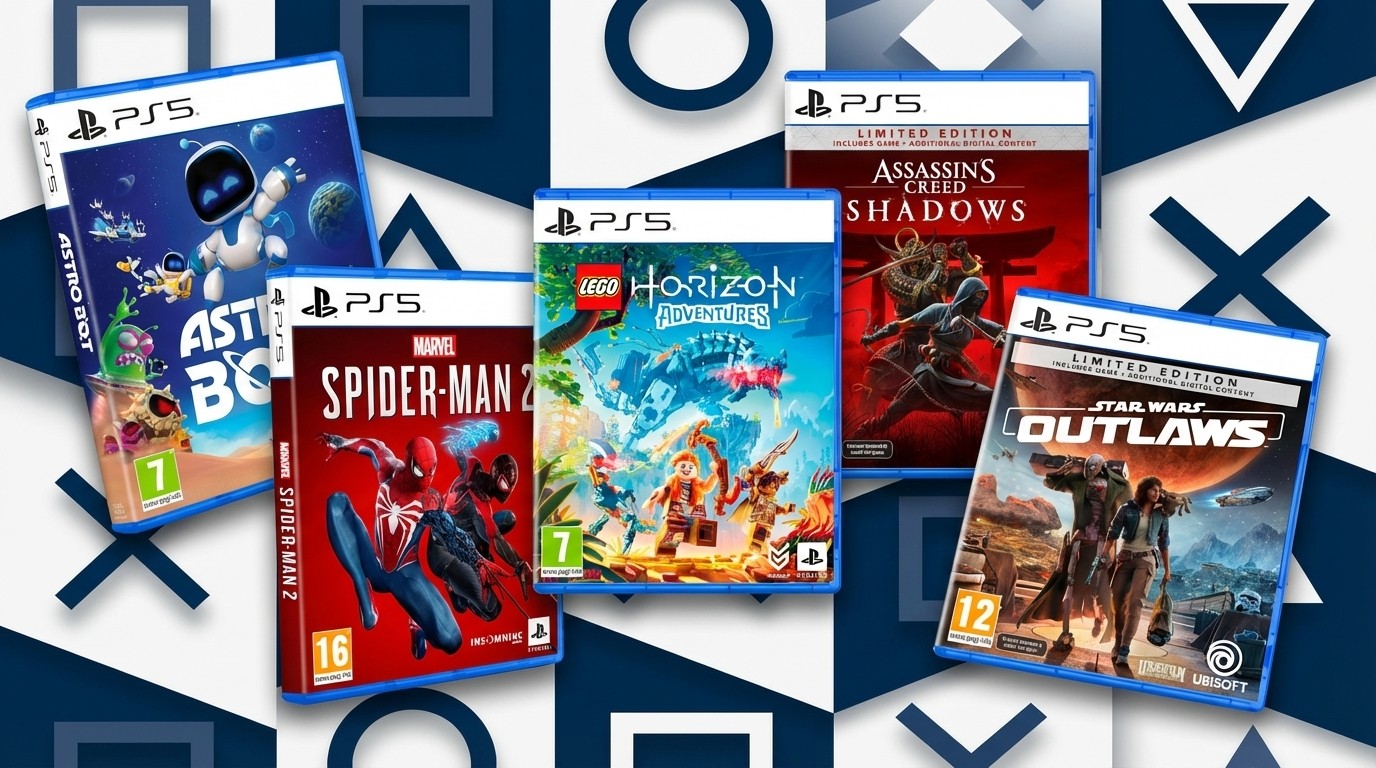This node-based creative AI app is changing how artists work
FLORA brings together every AI art and video model into into one infinite space.
AI art and AI video models are here to stay and reshaping how creatives work. The promise of AI tools democratising creativity has been a loud mantra for some time, but as more AI models emerge this is becoming a cluttered space, making that promise harder to live up to.
FLORA aims to make AI more accessible with a recognisable UI, Figma-like infinite, collaboration tools and every AI model in one space. You don't need to leave Flora to use other tools, and in the future even 'traditional' non-AI tools could be added for a complete workflow.
Built not by engineers trying to shoehorn AI into art, but by a team of working creatives and technologists, FLORA is a radical rethink of how we interact with generative models; it's an intuitive, tactile platform that prioritises exploration, happy accidents and control over cold automation. (Read my takeaway from Freepik Upscale Conference for more AI art news.)
I sat down with Weber Wong, co-founder of FLORA, to understand the philosophy behind the platform that’s quietly winning over the creative industry (with artists at agencies and studios such s Pentagram, Milk and MSCHF on board).
Ahead of my interview, I tried FLORA (you can for free at FloraFauna.ai) and found it's a platform designed less like a tech bro service and more like a love letter to visual thinkers. The node-based UI is familiar, the the layout of AI images clear and visual… it just feels normal, which is something fiddling with AI tools is often far from.
AI art's infinite canvas
At first glance FLORA might seem like just another AI app, but look closer and it becomes clear: this isn’t your typical prompt-in, output-out engine. Built around a Figma-like infinite canvas, FLORA lets users chain together text, image and video models into bespoke workflows.
“We’re not an AI model company,” says Weber. “We’re an interface company. Our team’s background is in art and design. We built FLORA the way we’d want to work, with full control, real iteration and an interface that lets you think visually.”
Daily design news, reviews, how-tos and more, as picked by the editors.
Instead of typing a prompt and getting a static image, you build flexible, node-based chains of creativity; transforming text into images, images into videos or animating concepts with reference materials. Each block (or ‘node’) represents a stage of the process, offering complete transparency and manipulation. It’s less ‘click-and-go’ and more ‘sketch, build, refine, repeat’.
FLORA’s interface isn’t an afterthought, it’s the main focus for the team. Weber and his team dug deep into the history of creative tools, studying everything from HyperCard (a 1980s interactive program for Apple Mac) to Blender and TouchDesigner. The goal? To reverse-engineer what makes a tool intuitive, especially for creatives.
“Most AI interfaces are built around technical assumptions,” says Weber. “We started from first principles: What does it mean to create? What are the steps? Where do creatives lose time? Then we built for that.”
Node-based software has long been niche, while its familiar to 3D artists or VFX creatives, the setup can be alien to others, but Weber believes that’s changing. “It used to be intimidating, but the creative world is catching on. Once you get over the initial hump, the ceiling is way higher. You can do so much more.”
FLORA smooths the curve with a thoughtfully designed UI that balances complexity and clarity. There’s a tactility to it, you’re not just generating images, you’re shaping them, remixing them, pushing them forward.
New to nod-based workflows (and AI)? FLORA has a menu of pre-made templates to choose from, whether you aim to create character design sheets for video games or typography designs.
An artist first approach
Unlike most AI tools rushing to appeal the masses and social media meme-makers, FLORA’s focus is on creative professionals. Agencies, in-house marketing teams, and filmmakers make up the bulk of FLORA's users. Weber tells me this was intentional.
“When we started, we didn’t build it for a specific use case. But when artists at agencies like Pentagram started reaching out, we realised this was something pros could really use to iterate fast, while keeping control.”
That approach has led to the development of Team Workspaces, FLORA’s next big feature, which brings collaborative pipelines to the platform à la Figma.
Weber tells FLORA will always offer two things: it will always have the latest AI models (over 200 integrated already), and it will always wrap them in the most intuitive interface possible. That means you don’t need to stress over model names or updates, you just get to work.
To date AI talk has been about automation and efficiency, set against this narrative FLORA is refreshingly human; Weber acknowledges that creativity is messy, iterative and personal.
“A lot of Silicon Valley thinks about AI as full automation, end-to-end generation,” Weber says. “We don’t." Rather than aiming for the finished 'one shot' generative image or video, Weber says FLORA is "above all about control of the process, to see the different steps play out and then iterate in different directions".
This means using FLORA can open AI up to both “happy accidents” and deliberate craft. AI isn't perfect and makes mistakes, which means control is becoming more important – FLORA enables you to riff on an idea and see where it leads organically or lock in a style early and refine. The node approach stacks everything clearly, and it means a change early in the stack follows through to all other nodes.
There’s even a hint of game design in the UI. Weber describes the interface as “fun to use, not just functional”. It invites exploration and experimentation, as Weber tells me, some people just want to create for fun and see what can be done, without an end goal or studio project in mind.
AI's future should be defined by artists
Despite AI’s rapid evolution, Weber remains grounded. While image and text models are already being used professionally, Weber acknowledges that areas like 3D and audio are still experimental. That hasn’t stopped the team from laying the groundwork for the future; collaborations with fine artists and MoMA alongside design studios shows how flexible something like FLORA can be.
While hype continues to outpace functionality in some creative sectors – Weber draws an imagined graph in the air with his finger that shows hype slowing and use-cases rising. He believes equilibrium is near.
“Right now, hype is still a bit ahead of what AI can do," he tells me. "But function is catching up. In a year or two, I think expectations and reality will finally align.”
Weber tells me the goal of developing FLORA is bring artists onboard, to remove the friction of using AI models. Now of course, ethical issues around AI's training remain, but if you are inclined to use AI, whether you’re storyboarding a campaign, ideating for a film, or building a new visual language, FLORA helps you get from idea to an end result with more clarity and fewer compromises.
By focusing on workflows, not just AI outputs, and creative control instead of convenience alone, FLORA stands apart in an increasingly crowded field. If Weber gets this right it may make AI accessible, but also desirable for artists who once feared losing their voice, and work.
As AI continues to be used more and more in the creative industries platforms like FLORA could be the way for forward for artists as its is doing what many AI tools promise but few deliver: giving power back to the creatives. And that, more than any model or prompt, is the real innovation.
Read our guide to the best AI image generators for game art for more, or if you prefer read our recommended digital art software for purely human-made art.

Ian Dean is Editor, Digital Arts & 3D at Creative Bloq, and the former editor of many leading magazines. These titles included ImagineFX, 3D World and video game titles Play and Official PlayStation Magazine. Ian launched Xbox magazine X360 and edited PlayStation World. For Creative Bloq, Ian combines his experiences to bring the latest news on digital art, VFX and video games and tech, and in his spare time he doodles in Procreate, ArtRage, and Rebelle while finding time to play Xbox and PS5.
You must confirm your public display name before commenting
Please logout and then login again, you will then be prompted to enter your display name.
